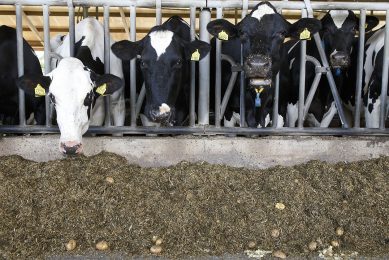New US feed rule: “industry is not ready”

The US will implement a stricter rule on livestock feed ingredients aimed at preventing mad cow disease. It will take effect next week, but cattle producers and other groups will have six months to comply.
The new rule is designed to keep the livestock feed system free of cattle parts at greatest risk for spreading bovine spongiform encephalopathy, or mad cow disease. The industry has until Oct. 26, 2009 to comply.
The FDA said it wanted to give renderers more time to comply and give other groups, such as cattle producers and packers, time to find other ways to dispose of prohibited material no longer allowed in animal feed. A year ago, the FDA published the new feed rule and said it would take effect on April 27, 2009. But the agency said many in the meat industry had not yet made changes to comply.
This month, FDA proposed delaying the April 27 deadline by 60 days, and opened the plan to public comment. More than 400 organizations and individuals, including cattle producers, renderers, meat processors and state agriculture agencies replied.
The agency said it opted to keep the April 27 start date to show "the agency’s clear intent to move forward" on the measure, but acknowledged not everyone was ready for the change. "It is apparent from the comments that a significant number of other stakeholders will not be ready to deal effectively with the new regulation when it goes into effect on April 27, 2009," the FDA said.
Many renderers have discontinued services ahead of the ban, and the rule will make it harder for cattle producers to find ways to dispose of carcasses, the National Cattlemen’s Beef Association said. "This decision is extremely disappointing," said Elizabeth Parker, NCBA’s chief veterinarian. "By going ahead with implementation of this unnecessary ban, the FDA is ignoring the substantial costs and environmental burdens it imposes on America’s cattle producers."
Parker said the October compliance date amounted to nothing more than "an empty gesture" as there is still no solution to help producers cope with the increased costs and disposal issues.











